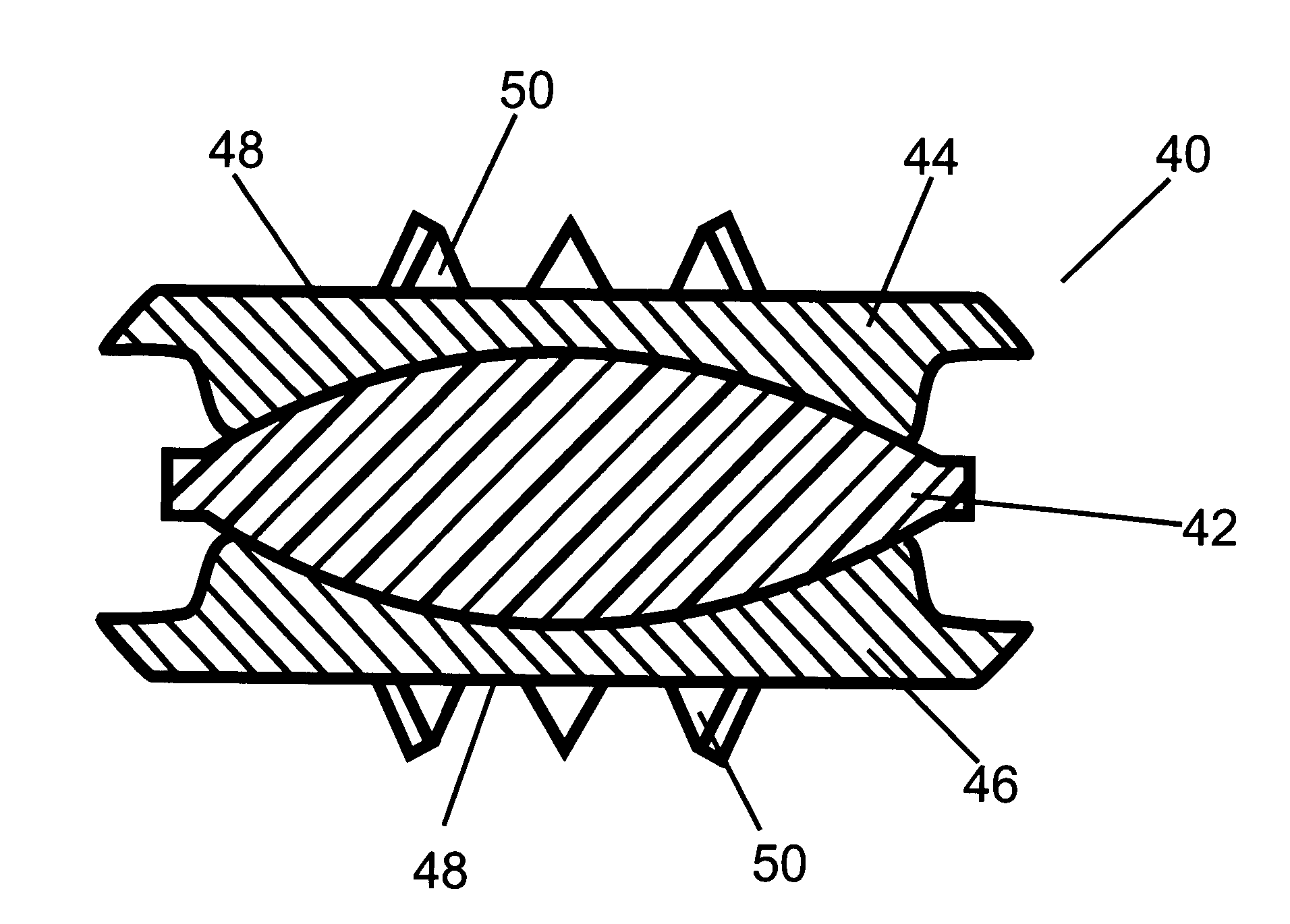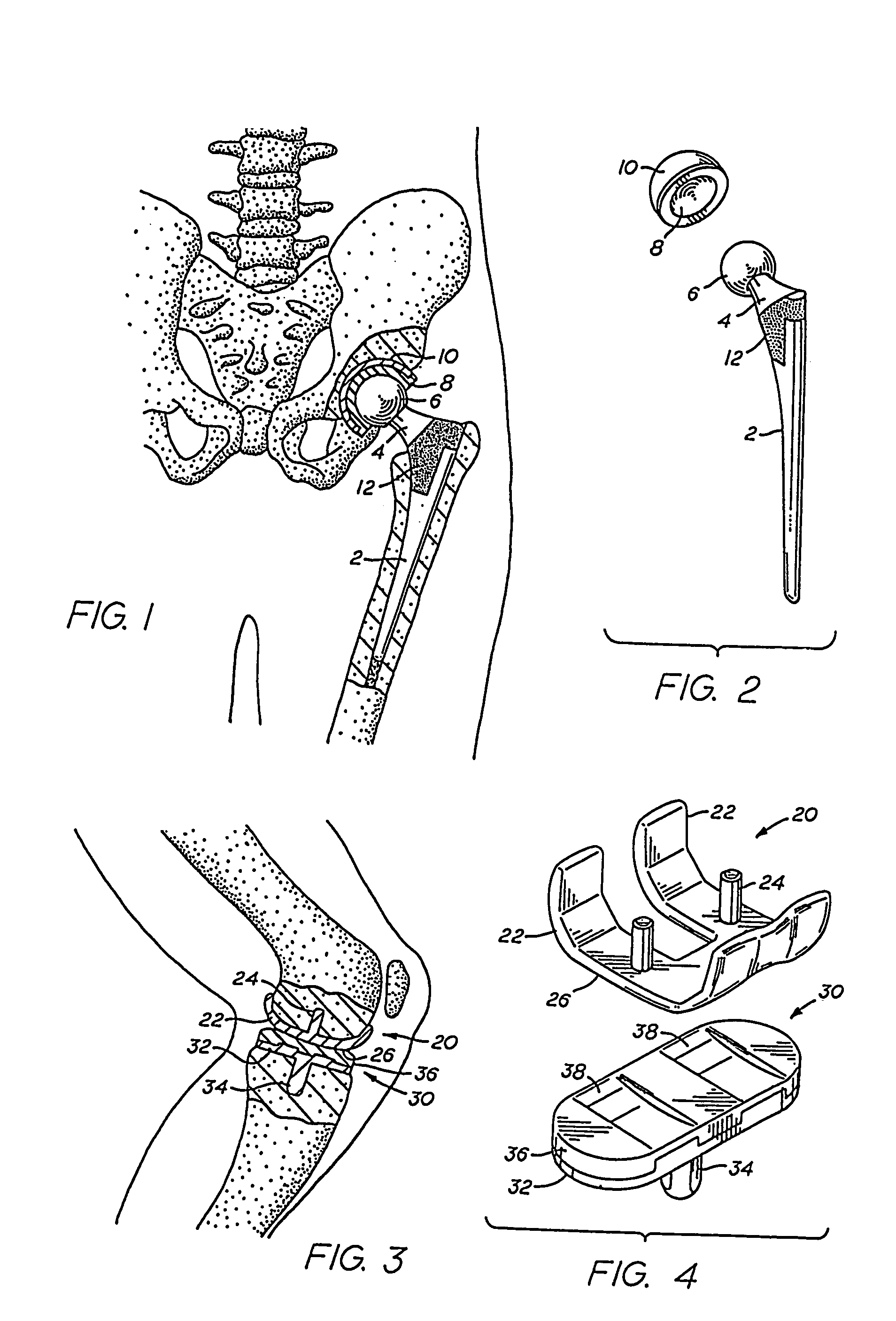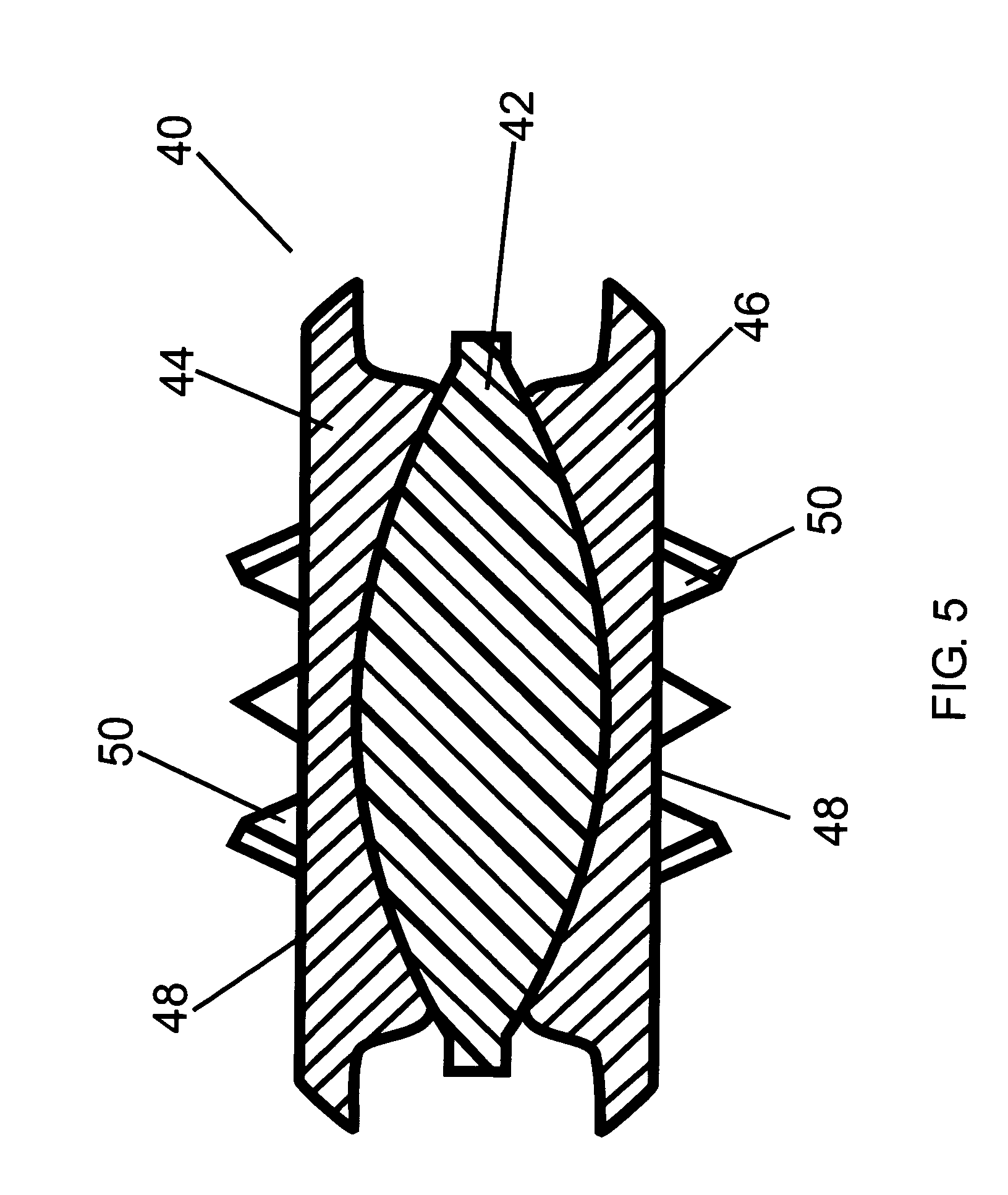Prosthetic devices employing oxidized zirconium and other abrasion resistant surfaces contacting surfaces of cross-linked polyethylene
a technology of oxidized zirconium and abrasion resistance, applied in the field of metal implants, can solve the problems of affecting the health of patients, the rate of wear of the articulating surface, and the long-term effect of metal ion release, and achieve the effect of improving the fixation
- Summary
- Abstract
- Description
- Claims
- Application Information
AI Technical Summary
Benefits of technology
Problems solved by technology
Method used
Image
Examples
Embodiment Construction
[0047]The present invention provides low friction, wear and creep resistant, articulating, interfacial bearing surfaces for prosthetic devices. Preferably, the invention provides for a prosthetic device in which one contacting surface is formed of blue-black or black oxidized zirconium and another contacting surface is formed of XLPE. Alternatively, one contacting surface is formed of an abrasion resistant material and another contacting surface is XLPE.
[0048]Oxidized zirconium presents itself in many forms, among them are white, beige, and blue-black. The white variety is particularly disfavored in the present application, as it tends to separate and break off of the substrate readily. Conventional oxidized zirconium surfaces formed, for example, by simple air oxidation will not be of the blue-black or black variety.
[0049]The blue-black or black oxidized zirconium of the instant invention possessing the necessary properties is primarily monoclinic crystal structure and may include ...
PUM
| Property | Measurement | Unit |
|---|---|---|
| Thickness | aaaaa | aaaaa |
| Thickness | aaaaa | aaaaa |
| Wear resistance | aaaaa | aaaaa |
Abstract
Description
Claims
Application Information
 Login to View More
Login to View More - R&D
- Intellectual Property
- Life Sciences
- Materials
- Tech Scout
- Unparalleled Data Quality
- Higher Quality Content
- 60% Fewer Hallucinations
Browse by: Latest US Patents, China's latest patents, Technical Efficacy Thesaurus, Application Domain, Technology Topic, Popular Technical Reports.
© 2025 PatSnap. All rights reserved.Legal|Privacy policy|Modern Slavery Act Transparency Statement|Sitemap|About US| Contact US: help@patsnap.com



